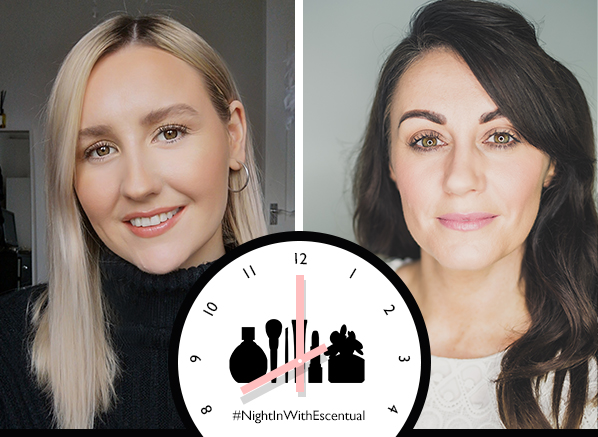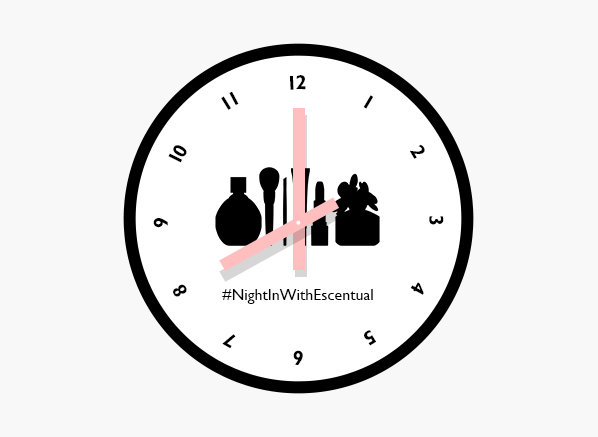

Sun damage is a fascinating topic; no one wants to get it, but many don’t realise they already have it. So I felt it was important to share my knowledge and education on the matter. I asked Janette, La Roche-Posay’s Head of Education for UK and Ireland (for 13 years now!) to partner with me for a #NightInWithEscentual, and the questions and feedback we had were astounding, even I was shocked by a few of the facts Janette had to share. It was by far, our most popular live to date; scroll to get the cliff notes, or, click here to watch the full episode.
Our Topic: The Truth About Sun Damage
#1 Anthelios is recommended by over 60,000 dermatologists worldwide.
La Roche-Posay’s sun care range: Anthelios is formulated for the needs of highly sensitive skin; all of their products contain high UVA, PPD and SPF protection. The range is also colour-coded to help you match the correct formula to your skin type. Look out for:
- Yellow: Normal skin
- Blue: Dry skin
- Green: Oily to combination skin
#2 UVA rays cause ageing and pigmentation.
UVA rays are invisible and you don’t feel them unlike UVB rays, which are hot and burn. UVA rays account to 93%-95% of ultraviolet rays, so if you want to protect against sun damage, broad-spectrum SPFs, and high UVA sun creams are essential. A basic SPF (UVB protection) won’t give you the protection you need.
UVA protection should be 1/3 of your SPF. So for example, a factor 50 should have a minimum level of 16. To find out whether your product has significant UVA protection, look out for the UVA circle on the front or back of the product. Still not sure? Tweet us.
#3 UVA rays are long and will penetrate glass and dense clouds.
UVA rays are out from sunrise to sunset, all year round. Even if the sun isn’t out, your dermis (the inner layer of skin where your collagen is produced) will still be affected by the ageing effects of UVA rays – it’s important to stay protected when you’re working indoors (close to windows) to avoid pigmentation and sun damage.
#4 High UVA protection is guaranteed with all La Roche-Posay sun care.
Due to the filtration system La Roche-Posay use in Anthelios, they offer at least two times higher UVA protection than what the EU recommend. For example, their star product, Anthelios SPF50+ Fluid has an SPF level of 50, but a UVA level of 46 – super protection!
#5 PPD is a form of UVA protection that’s essential to look for if you have pigmentation.
All of La Roche-Posay sun care products have high-level PPD protection. But if you suffer from pigmentation, the Tinted Cream SPF50+ is what we recommend – it has a UVA level of 39.
#6 80% of how we age is down to the environment.
20% is due to natural causes and time, but the number 1 cause of environmental ageing is down to UVA rays, which is also known as photoageing.
#7 Vertical lines on the skin are a sign of premature ageing.
Expression lines such as crows feet aren’t because of photoageing, but vertical creases on the cheeks are. If you see these marks, use retinol and daily SPF to counteract this.
#8 Act fast with pigmentation.
The mottled effect, age spots, liver spots and brown spots are all causes of pigmentation that can result from UVA. The darker these marks get, the more difficult they are to treat. Try weekly peels, wearing SPF50+ daily and use retinol before bed to help clear marks. If they persist, you’ll need to look into laser treatments.
A rise in hormonal activity (contraceptive pill, hormone therapy) also increases your risk of sun damage. Over 50% of pregnant women develop melasma, also known as the pregnancy mask. So it’s also important to protect your skin with broad-spectrum sun cream during your pregnancy to avoid pigmentation.
#9 80% of sun damage occurs before the age of 18.
It’s vital to protect babies, children and teenagers while teaching them the importance of sun protection.
#10 A suntan is sun damage.
Always protect your skin, no matter where you are. Re-apply your cream every 2 hours and avoid the sun between 11 am and 3 pm, as the sun is at its highest point, therefore it’s more damaging.
Watch The Full Conversation:
View this post on Instagram
Over To You!
What fact surprised you the most? Join the conversation on Instagram, Facebook and Twitter with #NightInWithEscentual.






